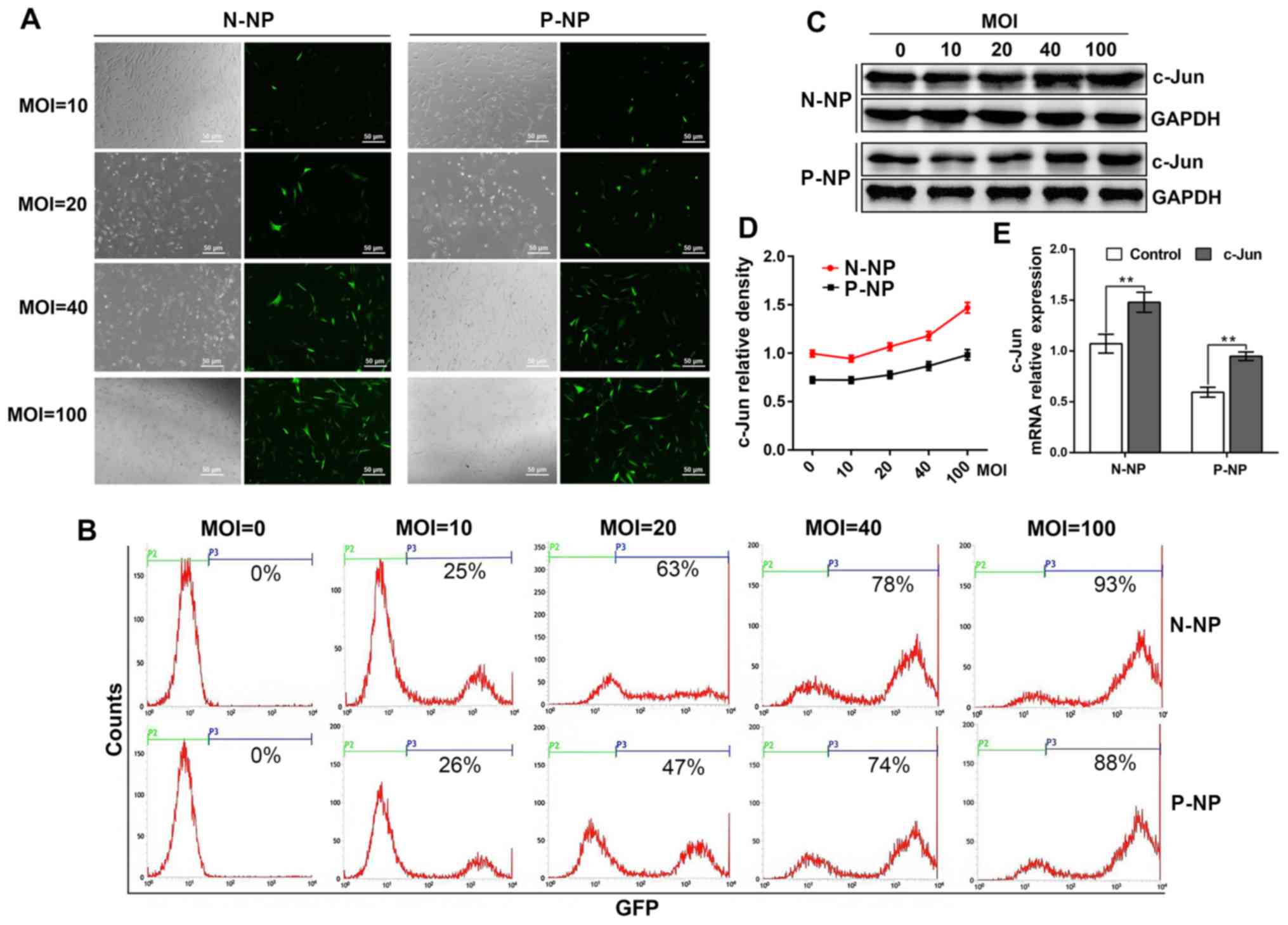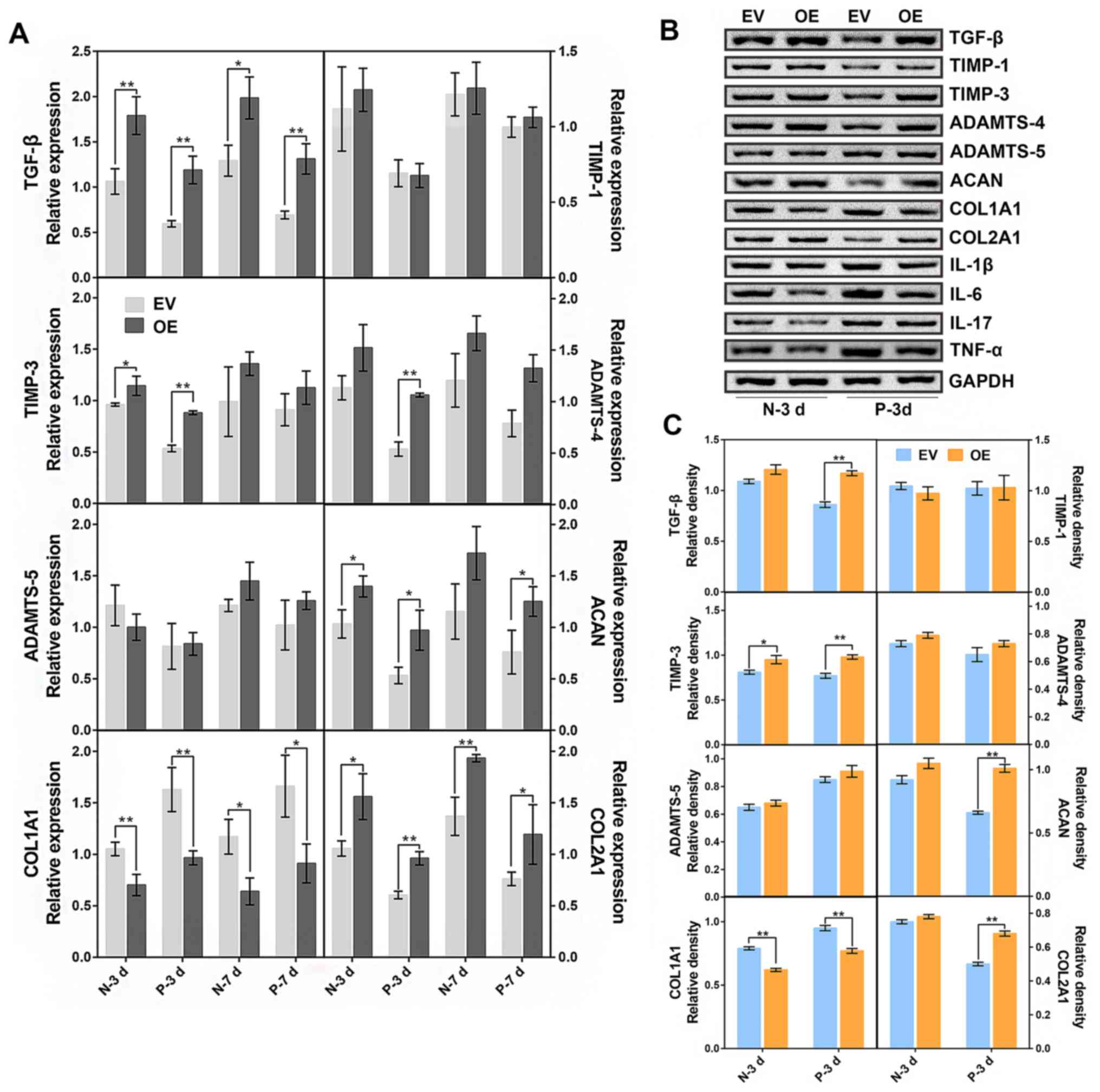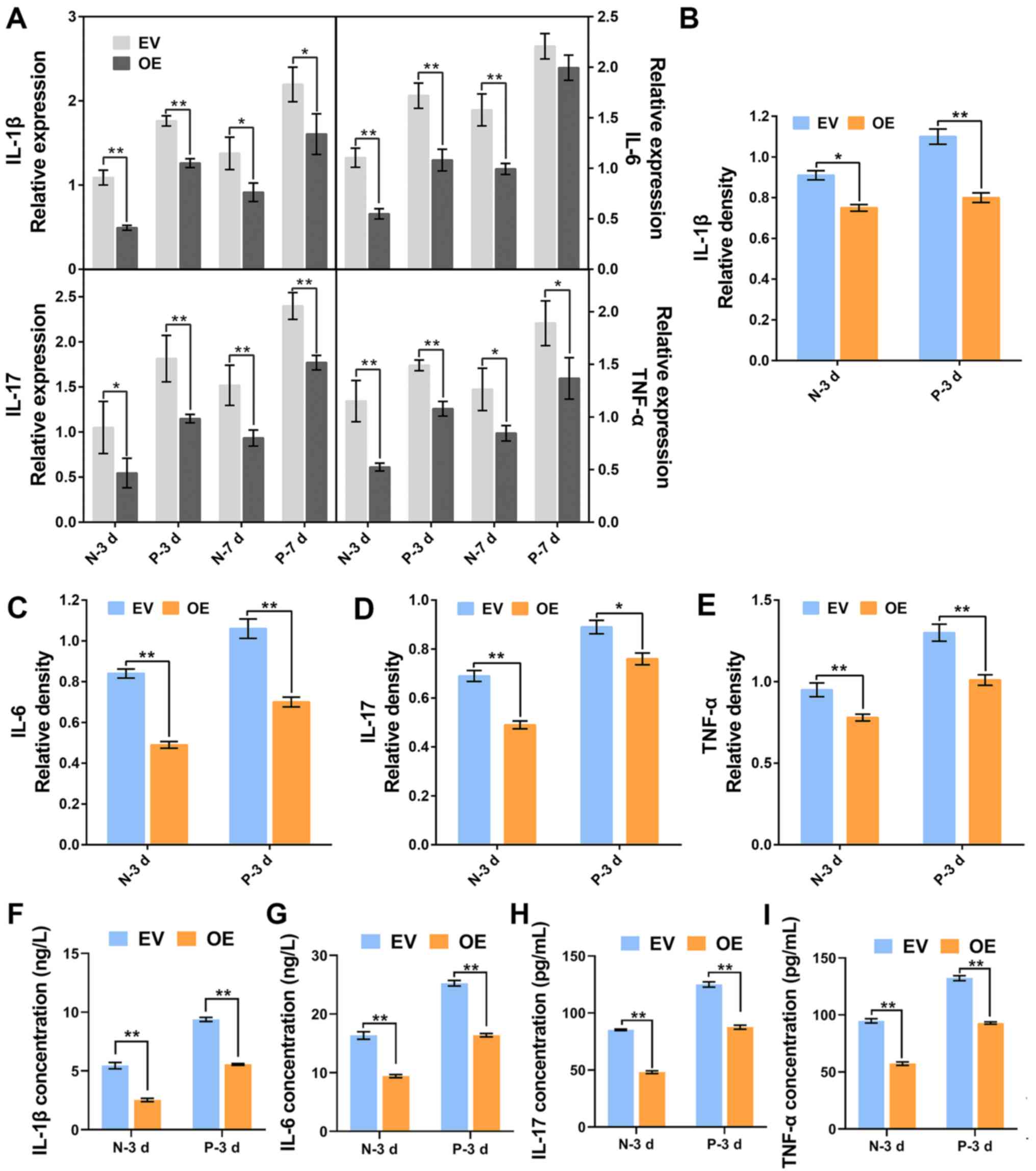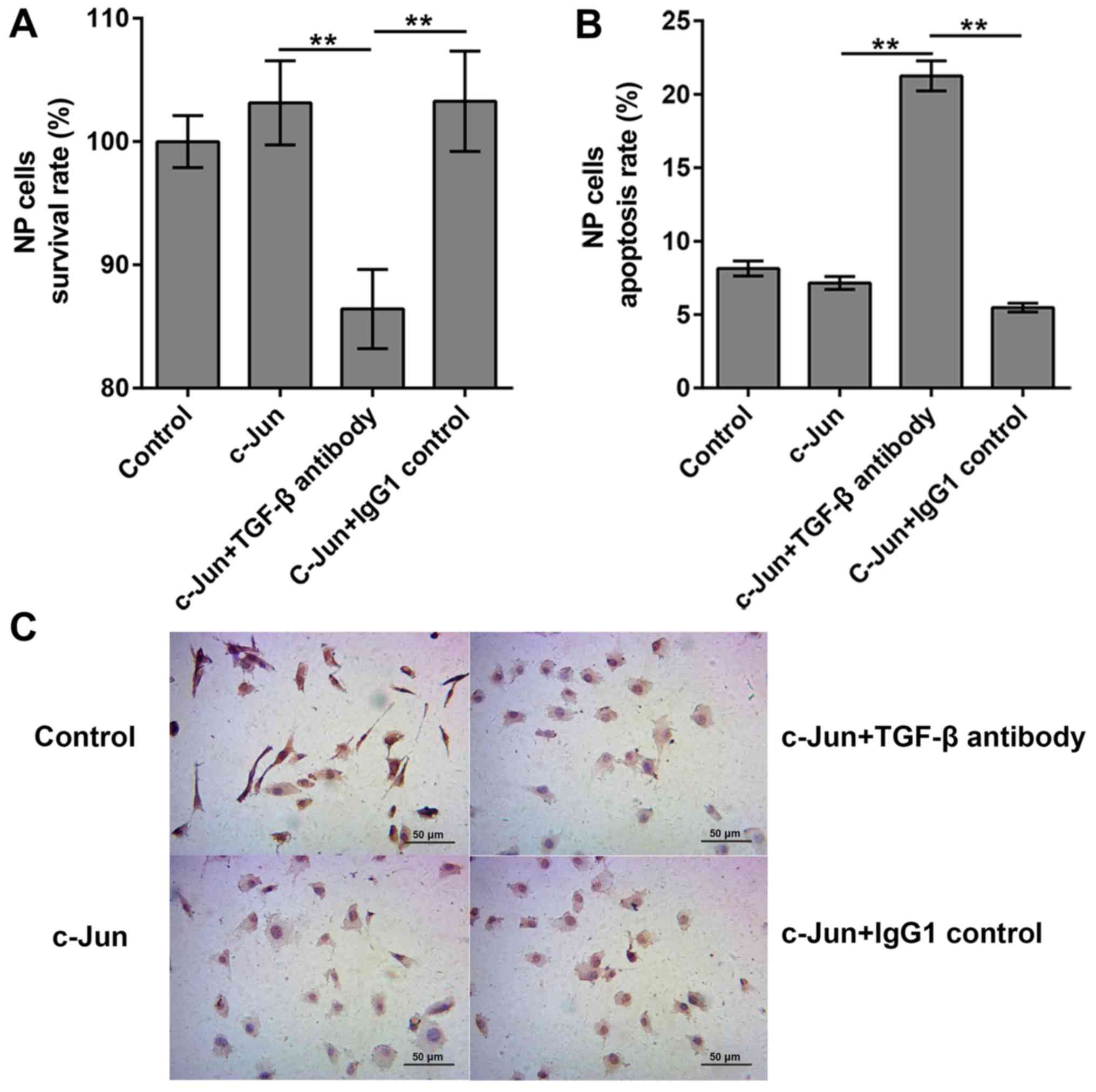|
1
|
Freemont AJ: The cellular pathobiology of
the degenerate intervertebral disc and discogenic back pain.
Rheumatology (Oxford). 48:5–10. 2009.PubMed/NCBI View Article : Google Scholar
|
|
2
|
Hanaei S, Abdollahzade S, Khoshnevisan A,
Kepler CK and Rezaei N: Genetic aspects of intervertebral disc
degeneration. Rev Neurosci. 26:581–606. 2015.PubMed/NCBI View Article : Google Scholar
|
|
3
|
Risbud MV and Shapiro IM: Role of
cytokines in intervertebral disc degeneration: Pain and disc
content. Nat Rev Rheumatol. 10:44–56. 2014.PubMed/NCBI View Article : Google Scholar
|
|
4
|
Zheng L, Jianxiong S, Wu WK, Xin Y,
Jinqian L, Guixing Q and Jiaming L: The role of leptin on the
organization and expression of cytoskeleton elements in nucleus
pulposus cells. J Orthop Res. 31:847–857. 2013.PubMed/NCBI View Article : Google Scholar
|
|
5
|
Li Z, Liang J, WK WK, Yu X, Yu J, Weng X
and Shen J: Leptin activates RhoA/ROCK pathway to induce
cytoskeleton remodeling in nucleus pulposus cells. Int J Mol Sci.
15:1176–1188. 2014.PubMed/NCBI View Article : Google Scholar
|
|
6
|
Pattison ST, Melrose J, Ghosh P and Taylor
TKF: Regulation of gelatinase-a (mmp-2) production by ovine
intervertebral disc nucleus pulposus cells grown in alginate bead
culture by transforming growth factor-β and insulin like growth
factor-1. Cell Biol Int. 25:679–689. 2001.PubMed/NCBI View Article : Google Scholar
|
|
7
|
Gruber HE and Hanley EN Jr: Recent
advances in disc cell biology. Spine (Phila Pa 1976). 28:186–193.
2003.PubMed/NCBI View Article : Google Scholar
|
|
8
|
Jianru W, Dessislava M, D Greg A, Zhaomin
Z, Irving MS and Makarand VR: TNF-α and IL-1β promote a
disintegrin-like and metalloprotease with thrombospondin type I
motif-5-mediated aggrecan degradation through syndecan-4 in
intervertebral disc. J Biol Chem. 286:39738–39749. 2011.PubMed/NCBI View Article : Google Scholar
|
|
9
|
Wang WJ, Yu XH, Wang C, Yang W, He WS,
Zhang SJ, Yan YG and Zhang J: MMPs and ADAMTSs in intervertebral
disc degeneration. Clin Chim Acta. 448:238–246. 2015.PubMed/NCBI View Article : Google Scholar
|
|
10
|
Vo NV, Hartman RA, Yurube T, Jacobs LJ,
Sowa GA and Kang JD: Expression and regulation of
metalloproteinases and their inhibitors inintervertebral disc aging
and degeneration. Spine J. 13:331–341. 2013.PubMed/NCBI View Article : Google Scholar
|
|
11
|
Jin H, Shen J, Wang B, Wang M, Shu B and
Chen D: TGF-β signaling plays an essential role in the growth and
maintenance of intervertebral disc tissue. FEBS Lett.
585:1209–1215. 2011.PubMed/NCBI View Article : Google Scholar
|
|
12
|
Feng C, Liu H, Yang M, Zhang Y, Huang B
and Zhou Y: Disc cell senescence in intervertebral disc
degeneration: Causes and molecular pathways. Cell Cycle.
15:1674–1684. 2016.PubMed/NCBI View Article : Google Scholar
|
|
13
|
Angel P and Karin M: The role of Jun, Fos
and the AP-1 complex in cell-proliferation and transformation.
Biochim Biophys Acta. 1072:129–157. 1991.PubMed/NCBI View Article : Google Scholar
|
|
14
|
Wisdom R, Johnson RS and Moore C: c-Jun
regulates cell cycle progression and apoptosis by distinct
mechanisms. EMBO J. 18:188–197. 1999.PubMed/NCBI View Article : Google Scholar
|
|
15
|
Behrens A, Sibilia M and Wagner EF:
Amino-terminal phosphorylation of c-Jun regulates stress-induced
apoptosis and cellular proliferation. Nat Genet. 21:326–329.
1999.PubMed/NCBI View
Article : Google Scholar
|
|
16
|
Santos MM, Tannuri AC, Coelho MC,
Gonçalves JD, Serafini S, Da Silva LF and Tannuri U: Immediate
expression of c-Fos and c-jun mRNA in a model of intestinal
autotransplantation and ischemia-reperfusion in situ. Clinics (Sao
Paulo). 70:373–379. 2015.PubMed/NCBI View Article : Google Scholar
|
|
17
|
Behrens A, Sibilia M, David JP,
Möhle-Steinlein U, Tronche F, Schütz G and Wagner EF: Impaired
postnatal hepatocyte proliferation and liver regeneration in mice
lacking c-jun in the liver. EMBO J. 21:1782–1790. 2002.PubMed/NCBI View Article : Google Scholar
|
|
18
|
Behrens A, Haigh J, Mechta-Grigoriou F,
Nagy A, Yaniv M and Wagner EF: Impaired intervertebral disc
formation in the absence of Jun. Development. 130:103–109.
2003.PubMed/NCBI View Article : Google Scholar
|
|
19
|
Pfirrmann CW, Metzdorf A, Zanetti M,
Hodler J and Boos N: Magnetic resonance classification of lumbar
intervertebral disc degeneration. Spine (Phila Pa 1976).
26:1873–1878. 2001.PubMed/NCBI View Article : Google Scholar
|
|
20
|
Livak KJ and Schmittgen TD: Analysis of
relative gene expression data using real-time quantitative PCR and
the 2(-Delta Delta C(T)) method. Methods. 25:402–408.
2001.PubMed/NCBI View Article : Google Scholar
|
|
21
|
Zhang Y, Feng XH and Derynck R: Smad3 and
Smad4 cooperate with c-Jun/c-Fos to mediate TGF-beta-induced
transcription. Nature. 394:909–913. 1998.PubMed/NCBI View
Article : Google Scholar
|
|
22
|
Ye N, Ding Y, Wild C, Shen Q and Jia Z:
Small molecule inhibitors targeting activator protein 1 (AP-1). J
Med Chem. 57:6930–6948. 2014.PubMed/NCBI View Article : Google Scholar
|
|
23
|
Tolonen J, Grönblad M, Virri J, Seitsalo
S, Rytömaa T and Karaharju E: Oncoprotein c-Fos and c-Jun
immunopositive cells and cell clusters in herniated intervertebral
disc tissue. Eur Spine J. 11:452–458. 2002.PubMed/NCBI View Article : Google Scholar
|
|
24
|
Monchaux M, Forterre S, Spreng D, Karol A,
Forterre F and Wuertz-Kozak K: Inflammatory processes associated
with canine intervertebral disc herniation. Front Immunol.
8(1681)2017.PubMed/NCBI View Article : Google Scholar
|
|
25
|
Liu XG, Hou HW and Liu YL: Expression
levels of IL-17 and TNF-α in degenerated lumbar intervertebral
discs and their correlation. Exp Ther Med. 11:2333–2340.
2016.PubMed/NCBI View Article : Google Scholar
|
|
26
|
Liu Y, Du Y, Wang H, Li D and Feng WH:
Porcine reproductive and respiratory syndrome virus (PRRSV)
up-regulates IL-8 expression through TAK-1/JNK/AP-1 pathways.
Virology. 506:64–72. 2017.PubMed/NCBI View Article : Google Scholar
|
|
27
|
Shaulian E and Karin M: AP-1 as a
regulator of cell life and death. Nat Cell Biol. 4:E131–E136.
2002.PubMed/NCBI View Article : Google Scholar
|
|
28
|
Li JK, Nie L, Zhao YP, Zhang YQ, Wang X,
Wang SS, Liu Y, Zhao H and Cheng L: IL-17 mediates inflammatory
reactions via p38/c-Fos and JNK/c-Jun activation in an
AP-1-dependent manner in human nucleus pulposus cells. J Transl
Med. 14(77)2016.PubMed/NCBI View Article : Google Scholar
|
|
29
|
Duval H, Mbatchi SF, Grandadam S, Legendre
C, Loyer P, Ribault C, Piquet-Pellorce C, Guguen-Guillouzo C,
Boudjema K and Corlu A: Reperfusion stress induced during
intermittent selective clamping accelerates rat liver regeneration
through JNK pathway. J Hepatol. 52:560–569. 2010.PubMed/NCBI View Article : Google Scholar
|
|
30
|
Koba S, Pakala R, Watanabe T, Katagiri T
and Benedict CR: Vascular smooth muscle proliferation-a protein
kinase stimulated by UV light and Ha-Ras that binds and
phosphorylates the c-Jun activation domain. J Am Coll Cardiol.
34:1644–1651. 1999.
|
|
31
|
Lee YJ, Kong MH, Song KY, Lee KH and Heo
SH: The relation between Sox9, TGF-beta1, and proteoglycan in human
intervertebral disc cells. J Korean Neurosurg Soc. 43:149–154.
2008.PubMed/NCBI View Article : Google Scholar
|
|
32
|
Wang SL, Yu YL, Tang CL and Lv FZ: Effects
of TGF-β1 and IL-1β on expression of ADAMTS enzymes and TIMP-3 in
human intervertebral disc degeneration. Exp Ther Med. 6:1522–1526.
2013.PubMed/NCBI View Article : Google Scholar
|
|
33
|
Nakai T, Mochida J and Sakai D:
Synergistic role of c-Myc and ERK1/2 in the mitogenic response to
TGF beta-1 in cultured rat nucleus pulposus cells. Arthritis Res
Ther. 10(R140)2008.PubMed/NCBI View
Article : Google Scholar
|
|
34
|
Iwata A, Masago A and Yamada K: Expression
of basic fibroblast growth factor mRNA after transient focal
ischemia: Comparison with expression of c-fos, c-jun, and hsp 70
mRNA. J Neurotrauma. 14:201–210. 1997.PubMed/NCBI View Article : Google Scholar
|
|
35
|
Qing J, Zhang Y and Derynck R: Structural
and functional characterization of the transforming growth
factor-beta-induced Smad3/c-Jun transcriptional cooperativity. J
Biol Chem. 275:38802–38812. 2000.PubMed/NCBI View Article : Google Scholar
|
|
36
|
Yan L, Kang L, Han X, Mao C, Kai Z, Zhao T
and Jie Z: The imbalance between TIMP3 and matrix-degrading enzymes
plays an important role in intervertebral disc degeneration.
Biochem Biophys Res Commun. 469:507–514. 2016.PubMed/NCBI View Article : Google Scholar
|
|
37
|
Chung SA, Khan SN and Diwan AD: The
molecular basis of intervertebral disk degeneration. Orthop Clin
North Am. 34:209–219. 2003.PubMed/NCBI View Article : Google Scholar
|
|
38
|
Hiyama A, Gogate SS, Gajghate S, Mochida
J, Shapiro IM and Risbud MV: BMP-2 and TGF-beta stimulate
expression of beta 1,3-glucuronosyl transferase 1 (GlcAT-1) in
nucleus pulposus cells through AP1, TonEBP, and Sp1: Role of MAPKs.
J Bone Miner Res. 25:1179–1190. 2010.PubMed/NCBI View Article : Google Scholar
|
|
39
|
Gaudet P, Livstone MS, Lewis SE and Thomas
PD: Phylogenetic-based propagation of functional annotations within
the gene ontology consortium. Brief Bioinform. 12:449–462.
2011.PubMed/NCBI View Article : Google Scholar
|
|
40
|
Qian Z, Li Y, Chen J, Li X and Gou D:
MiR-4632 mediates PDGFBB-induced proliferation and anti-apoptosis
of human pulmonary artery smooth muscle cells via targeting cJUN.
Am J Physiol Cell Physiol. 313:C380–C391. 2017.PubMed/NCBI View Article : Google Scholar
|
|
41
|
Khachigian LM, Fahmy RG, Zhang G,
Bobryshev YV and Kaniaros A: c-Jun regulates vascular smooth muscle
cell growth and neointima formation after arterial injury.
Inhibition by a novel DNA enzyme targeting c-Jun. J Biol Chem.
277:22985–22991. 2002.PubMed/NCBI View Article : Google Scholar
|
|
42
|
Kappelmann M, Bosserhoff A and Kuphal S:
AP-1/c-Jun transcription factors: Regulation and function in
malignant melanoma. Eur J Cell Biol. 93:76–81. 2014.PubMed/NCBI View Article : Google Scholar
|


















